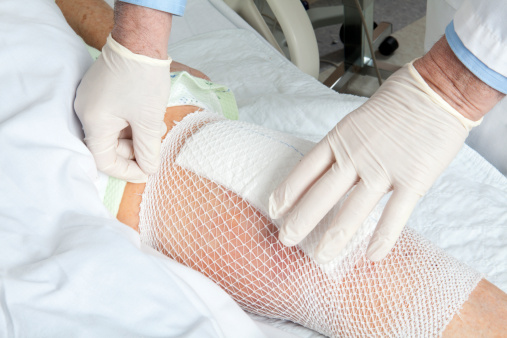 Every year in the U.S., hundreds of thousands of people have arthroscopic surgery on their knees. Why are so many people willing to go under the knife? They are trying to “fix” a torn meniscus—that bit of crescent-shaped cartilage that functions as a cushion for the knee, while at the same time stabilizing it.
Every year in the U.S., hundreds of thousands of people have arthroscopic surgery on their knees. Why are so many people willing to go under the knife? They are trying to “fix” a torn meniscus—that bit of crescent-shaped cartilage that functions as a cushion for the knee, while at the same time stabilizing it.
Does arthroscopic surgery make a torn meniscus function as if it was brand new? Not necessarily, according to a new study. Finnish researchers have found that this popular surgical procedure may be no more helpful than having a “fake” operation.
For their study, the research team divided patients suffering knee pain due to a torn meniscus into two groups: one which received anesthesia and arthroscopic surgery, and a second group which was also anesthetized but underwent only simulated surgery. The volunteers were not told which form of surgery they were getting, real or fake.Also Read ==> Pain Behind Knee – Causes and Natural Treatments
Arthroscopic surgery involves executing two small incisions on the knee. An arthroscope is then inserted into the incisions allowing a doctor to get a good look at the meniscus. Any visible torn pieces are trimmed away. Ragged edges of the cartilage that may interfere with the normal movement of the knee joint are also smoothed away.In the U.S. alone, arthroscopic surgery to repair a torn meniscus is performed in excess of 600,000 times a year at the cost of billions of dollars.During the study, the research team checked in on the volunteers a year after surgery was performed. Patients in both groups said that their knees were causing them less pain and movement was easier. Most said they would have arthroscopic surgery again even if it was the fake version. The researchers concluded this suggests that many people who sign up for the procedure would find other options like physical therapy just as beneficial.
The researchers cautioned that they weren’t advocating that arthroscopic therapy be taken off the table completely as a treatment for a torn meniscus. They noted that the surgical procedure should still probably be performed when the meniscus is torn due to a sudden sports injury. They also suggested that younger patients may still benefit from arthroscopic surgery.
But for the hundreds of thousands of individuals who have trouble with their meniscus due to wear and tear as they get older, knee surgery should be a very last resort. The operation is simply proving to be of little value in these cases.
Other studies have also shown that arthroscopic surgery makes little difference for those with meniscus tears. Physical therapy may be a better option. A doctor first needs to determine if a patient’s knee pain is caused by a torn meniscus or another trigger altogether such as osteoarthritis. Also, knee pain that doesn’t involve the loss of mechanical knee function may not respond at all to surgery.
If you’re considering knee surgery, talk to your doctor and discuss your options. Ask some questions about physical therapy and what it could do to benefit your knees.
See More : Knee Pain at Night: Causes and Treatments
Sources:
Belluck, P., “Common Knee Surgery Does Very Little for Some, Study Suggests,” The New York Times web site, Dec. 25, 2013; http://www.nytimes.com/2013/12/26/health/common-knee-surgery-does-very-little-for-some-study-suggests.html?ref=research&_r=0, last accessed Jan. 14, 2014.
Sihoven, R., et al., “Arthroscopic partial meniscectomy versus sham surgery for a degenerative meniscal tear,” N Engl J Med. December 2013; 369(26): 2,515-24.
